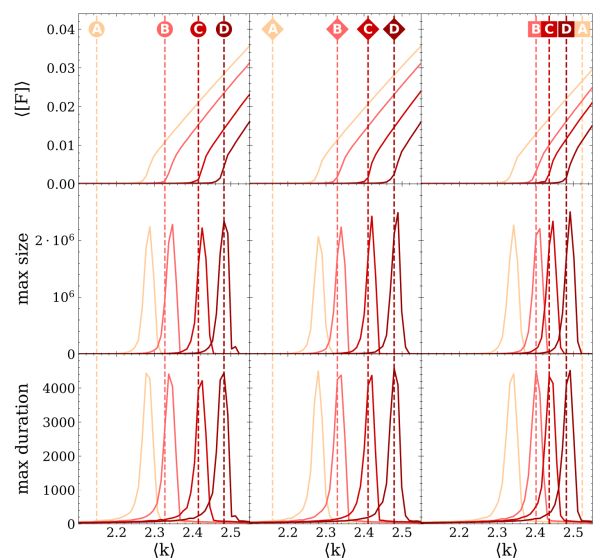sormunen2022critical
Critical Drift in a Neuro-Inspired Adaptive Network
Silja Sormunen, Thilo Gross and Jari Saramäki
Phys. Rev. Lett. 130, 188401, 2023
It has been postulated that the brain operates in a self-organized critical state that brings multiple benefits, such as optimal sensitivity to input. Thus far, self-organized criticality has typically been depicted as a one-dimensional process, where one parameter is tuned to a critical value. However, the number of adjustable parameters in the brain is vast, and hence critical states can be expected to occupy a high-dimensional manifold inside a high-dimensional parameter space. Here, we show that adaptation rules inspired by homeostatic plasticity drive a neuro-inspired network to drift on a critical manifold, where the system is poised between inactivity and persistent activity. During the drift, global network parameters continue to change while the system remains at criticality.

Figure 1: After a system is started in a random configuration (A) it quickly reaches a critical configuration (B). However, even after criticality has been reached, self-organization continues changing, leading to additional changes in network structure (C,D) while the system remains critical. This is possible as the system has a multi-dimensional parameter space in which the critical states form a codimension-1 manifold.